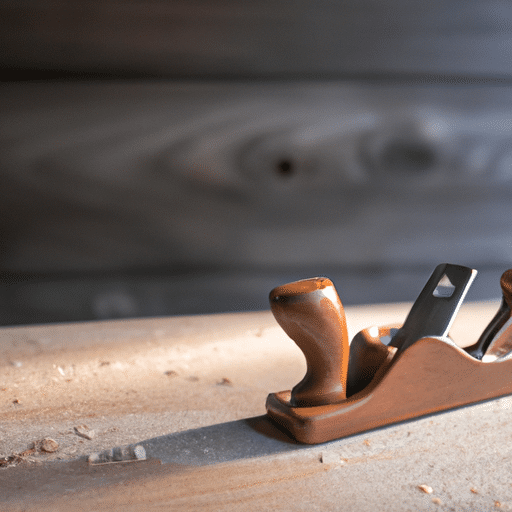In this article, we will discuss some useful tips and tricks for saving money on tools and materials for your woodworking projects. From finding affordable options to making the most out of what you already have, we’ll cover a range of strategies to help you pursue your passion without breaking the bank. Whether you’re a beginner or a seasoned woodworker, there’s something here for everyone. So, let’s get started and discover some creative and budget-friendly ways to pursue your woodworking hobby or business.

Creating a Budget
Determining your woodworking goals
Before you can start woodworking on a budget, it’s important to determine your woodworking goals. Are you a beginner looking to build basic furniture, or do you have aspirations of creating intricate wooden sculptures? Knowing your goals will help you make informed decisions when it comes to purchasing tools and materials.
Assessing your financial situation
Once you have a clear understanding of your woodworking goals, it’s time to assess your financial situation. Take a close look at your income, expenses, and any other financial commitments you have. This will help you determine how much you can realistically allocate towards your woodworking hobby.
Setting a realistic budget
After assessing your financial situation, it’s time to set a realistic budget for your woodworking endeavors. Take into consideration the cost of tools, materials, and any other expenses you may incur. It’s important to be honest with yourself and set a budget that you can comfortably stick to.
Sourcing Affordable Tools
Researching different tool options
When it comes to purchasing tools, it’s important to research different options. Look for tools that are known for their quality and durability, but also for their affordability. Read online reviews and seek recommendations from other woodworkers to make an informed decision.
Looking for secondhand tools
One great way to save money on tools is by looking for secondhand options. Many woodworkers sell their gently used tools at a fraction of the original price. Check classified ads, online marketplaces, and local woodworking groups for secondhand tools that are in good condition.
Exploring online marketplaces
Online marketplaces like eBay, Craigslist, and Facebook Marketplace can be great resources for finding affordable tools. Keep an eye out for deals and discounts, and be sure to thoroughly research the sellers before making a purchase.
Attending tool swap meets or garage sales
Tool swap meets and garage sales are another great way to find affordable tools. These events often attract woodworking enthusiasts who are looking to sell or trade their tools. You can often find great deals and even get the chance to try out different tools before making a purchase.

Optimizing Tool Maintenance
Proper cleaning and storage practices
Proper tool maintenance is key to ensuring their longevity. Develop a routine for cleaning your tools after each use, removing any debris or sawdust that may have accumulated. Additionally, invest in storage solutions that will keep your tools safe and organized when not in use.
Sharpening and maintaining cutting edges
Dull cutting edges can hinder your woodworking projects and even pose safety risks. Invest in a quality sharpening system and learn how to properly sharpen your tools. Regularly inspect and maintain your cutting edges to ensure optimal performance.
Extending the lifespan of tools with maintenance routines
In addition to regular cleaning and sharpening, implementing maintenance routines can help extend the lifespan of your tools. This may include lubricating moving parts, tightening loose screws, and replacing worn-out components. By taking care of your tools, you’ll save money in the long run by avoiding unnecessary repairs or replacements.
DIY Tool Modifications
Repurposing materials for tool accessories
Instead of purchasing expensive tool accessories, consider repurposing materials you already have. For example, a scrap piece of plywood can be transformed into a custom workbench or a block of wood can be used as a makeshift sanding block. Get creative and think outside the box to save money on tool accessories.
Building jigs and fixtures instead of buying specialized tools
Specialized woodworking tools can be costly, but many tasks can be accomplished with the help of jigs and fixtures. By building your own jigs and fixtures, you can save money and still achieve precise and accurate results. Look for plans and tutorials online or in woodworking books to get started.
Upgrading and customizing tools on a budget
If you already have some basic tools, consider upgrading and customizing them to better suit your needs. For example, you can create custom handles for your chisels or add a fence to your table saw. These small modifications can greatly enhance the functionality of your tools without breaking the bank.

Selecting Cost-Effective Materials
Researching affordable wood options
Wood can be a significant expense in woodworking projects, but there are affordable options available. Research different types of wood and their prices to identify cost-effective options. Softwoods like pine and cedar are usually more affordable than hardwoods like oak or maple.
Using reclaimed or salvaged materials
One of the best ways to save money on materials is by using reclaimed or salvaged wood. Look for old furniture, pallets, or construction sites where you can find discarded wood. With a little bit of effort and creativity, you can transform these materials into beautiful woodworking projects.
Maximizing material yield through proper planning
To minimize waste and save money, it’s important to plan your projects carefully. Take accurate measurements and create detailed project plans to ensure you’re using the right amount of materials. By maximizing your material yield, you can avoid unnecessary expenses and make the most out of each piece of wood.
Utilizing Offcuts and Scrap
Finding creative uses for leftover wood
Instead of tossing away offcuts and scrap wood, find creative ways to use them in your woodworking projects. From small decorative pieces to functional items like cutting boards or coasters, there are countless possibilities for utilizing leftover wood. Embrace the challenge of working with odd-shaped pieces and see what you can create.
Creating small projects or crafts from scraps
Another way to make the most out of your offcuts and scrap wood is by creating small projects or crafts. This could be anything from birdhouses and picture frames to jewelry boxes and toy cars. Not only will you save money by using materials you already have, but you’ll also have the opportunity to practice new woodworking techniques on a smaller scale.
Designing projects that utilize odd-sized pieces
When planning your woodworking projects, consider designing them in a way that utilizes odd-sized pieces. This will allow you to make use of those leftover or unconventional pieces of wood. With some careful planning and creative thinking, you can create unique and beautiful pieces while saving money on materials.

Collaborating and Sharing Resources
Joining woodworking communities or forums
Woodworking communities and forums are a great resource for connecting with other woodworkers and sharing knowledge. By joining these communities, you can learn from experienced woodworkers, ask for advice, and even find opportunities to collaborate on projects. Sharing resources and tools can also help you save money in the long run.
Participating in tool-sharing programs
If you don’t have the budget to purchase all the tools you need, consider participating in tool-sharing programs. These programs allow you to borrow tools for a certain period of time, saving you the expense of buying them outright. Check with local woodworking clubs or community centers to see if they offer tool-sharing programs.
Pooling resources with other woodworkers
Similarly, consider pooling resources with other woodworkers in your community. By sharing tools and materials, you can collectively save money and have access to a wider range of resources. Host tool swap events or organize collaborative projects where everyone contributes their skills and resources.
Educating Yourself
Learning from free online resources and tutorials
When it comes to woodworking, there are numerous free online resources and tutorials available. From YouTube videos to blog posts and forums, you can find plenty of educational content to improve your skills. Take advantage of these resources to learn new techniques and gain valuable insights from experienced woodworkers.
Borrowing woodworking books from the library
Another cost-effective way to educate yourself about woodworking is by borrowing books from the library. The library is a treasure trove of woodworking literature, ranging from beginner’s guides to advanced woodworking techniques. Take advantage of this resource to expand your knowledge without spending a dime.
Attending affordable woodworking workshops or classes
If you prefer hands-on learning, look for affordable woodworking workshops or classes in your area. Many community centers, woodworking clubs, and vocational schools offer workshops taught by experienced woodworkers. By investing in a small fee for these classes, you can gain practical skills and knowledge that will benefit you in your woodworking journey.

Practicing Efficient Project Planning
Creating detailed project plans to avoid mistakes
Before starting any woodworking project, create a detailed project plan. This will help you avoid costly mistakes and ensure that you have a clear vision of how the project will come together. Take measurements, create sketches, and make a list of materials and tools needed. By planning ahead, you can save time, money, and frustration.
Optimizing material usage through accurate measurements
Accurate measurements are key to optimizing material usage. Take the time to measure twice and cut once to minimize waste. Use tools like a miter saw or a table saw to make precise and straight cuts. By being diligent with your measurements, you can make the most out of your materials and save money in the process.
Minimizing waste through careful project execution
Careful project execution is essential to minimizing waste. Take your time and pay attention to detail during each step of the project. Use techniques like hand-planing or sanding to refine and shape your workpiece instead of relying on power tools. This will help you avoid mistakes that could result in wasted materials and unnecessary expenses.
Conclusion
Woodworking on a budget is not only possible, but it can also be a rewarding and fulfilling experience. By following these tips and implementing money-saving strategies, you can enjoy woodworking while being mindful of your expenses. Remember to set realistic goals, research affordable options, and embrace the creative possibilities that come with working within a budget. Woodworking can be a financially accessible hobby that allows you to unleash your creativity and achieve your woodworking goals.





